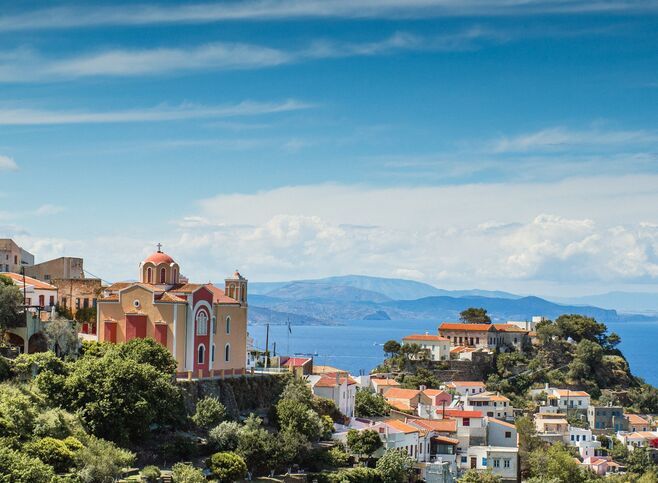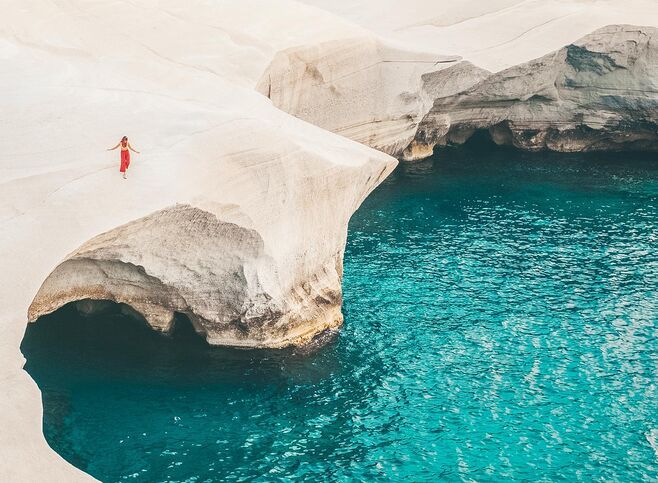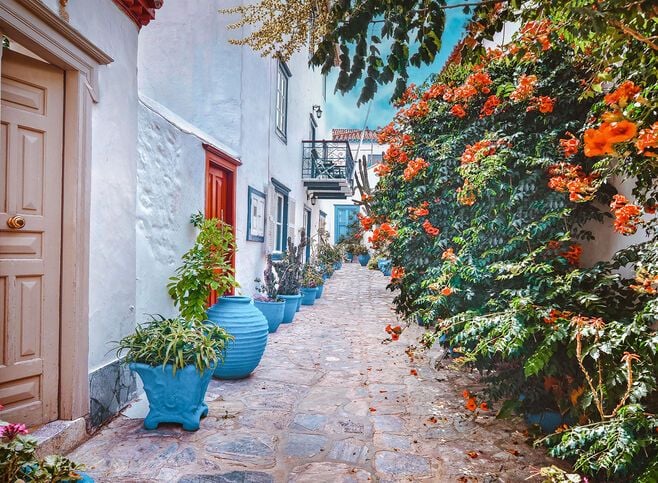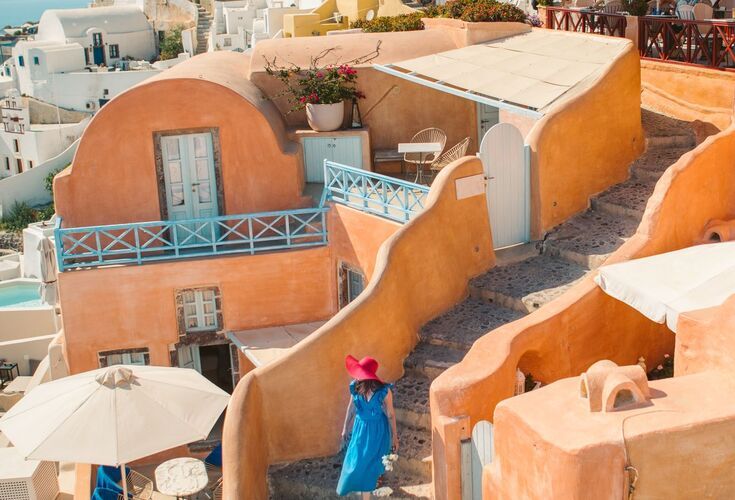- Places to go
- Things to do
- Book your trip
- Get Inspired
- More
- BACK
-
-
Cosmopolitan and friendly Kea is just an hour from the port of Lavrio, east of Athens. Those who know the island – whether as Kea or its alternatives Tzia, Gia or Zea – begin their weekend sojourns in spring, enjoying fresh fish at the tavernas in the marinas. You’ll love discovering its beaches, old churches, Hellenistic towers, watermills and windmills… and trekking its trails that pass no fewer than four ancient cities (Ioulis, Korissia, Poiessa and Karthaia). Mythology says that Kea island was the first home of the nymphs and it isn’t hard to imagine why. So whether it’s your end destination or part of a day cruise to the islands close to Athens, you’ll love getting to know this little star that goes by so many names.
The carved statue of the Lion of Ioulis is the guard and emblem of Kea, associated with its myths and dating to the early Archaic Period. Strolling around Ioulis, you’ll understand why it’s a main town unlike any other in the Cyclades islands. Its houses are colourful and often decorated with ceramic tiles, while the paved alleyways give it a village feel.
For a walk that takes you back in time, head to Ioulis – of Kea’s ancient cities, the only one built inland. Spread along a slope like an amphitheatre, it invites you to lose yourself in the magic of its stately homes, vaulted alleys, fountains, traditional architecture and Venetian castle. Devote a moment to the neoclassical Town Hall, designed by the famous architect Ernst Ziller. The Archaeological Museum of Kea, considered one of the most important of its kind in the Cyclades, is a must-see.
“This narrow, rocky land of Karthea, I would not exchange it with Babylon,” wrote the ancient Greek poet Pindar. And it’s worth devoting a day to visiting the most important of all the four ancient cities of Kea, which flourished in the Archaic period. Here history comes to life in the Doric Temple of Pythiou Apollona, built in 530 BC and thought to be dedicated to Athens. Try to arrive at Karthea by the ancient trail of Vathipotamou, just as worshippers once did. A one-hour walk is rewarded by a refreshing swim at Poles beach.
The sandy beaches of Vourkari, Gialiskari, Korissia, Koundouros, Orkos, Pisses and Spathi are shaded by eucalyptus trees, among others, and all boast calm, clear waters. They are amongst the best on Kea and are especially popular with boat owners.
The HMHS Britannic, sister-ship to the Titanic, was sunk just off Kea by a German naval mine in 1916 on only its sixth voyage. The famous marine explorer Jacques Yves Cousteau and his team explored it in 1975 but, to date, few divers have approached the 120m-deep wreck, even though it’s considered one of the most significant shipwrecks in the Mediterranean. On the reef of Koundourou, there’s another sunken ship – the steamer Patris that went down off the coast of Tzia in 1868.
A short distance from Sklavonikola, you will discover a part of the Tower of Panachras, from Kea’s Hellenistic period, measuring 4.5m in height. There is also the nearby tower of Agia Marina. At five storeys, it is one of the tallest surviving monuments of the Mediterranean.
Plan a trip to the prehistoric settlements of Agia Irini and Kefalas, which remain in good condition.
If you’re into off-road driving, come with your jeep: you’ll love the dirt roads of Kea. A more sedate way to get to know the island is by trekking its many signposted trails.



